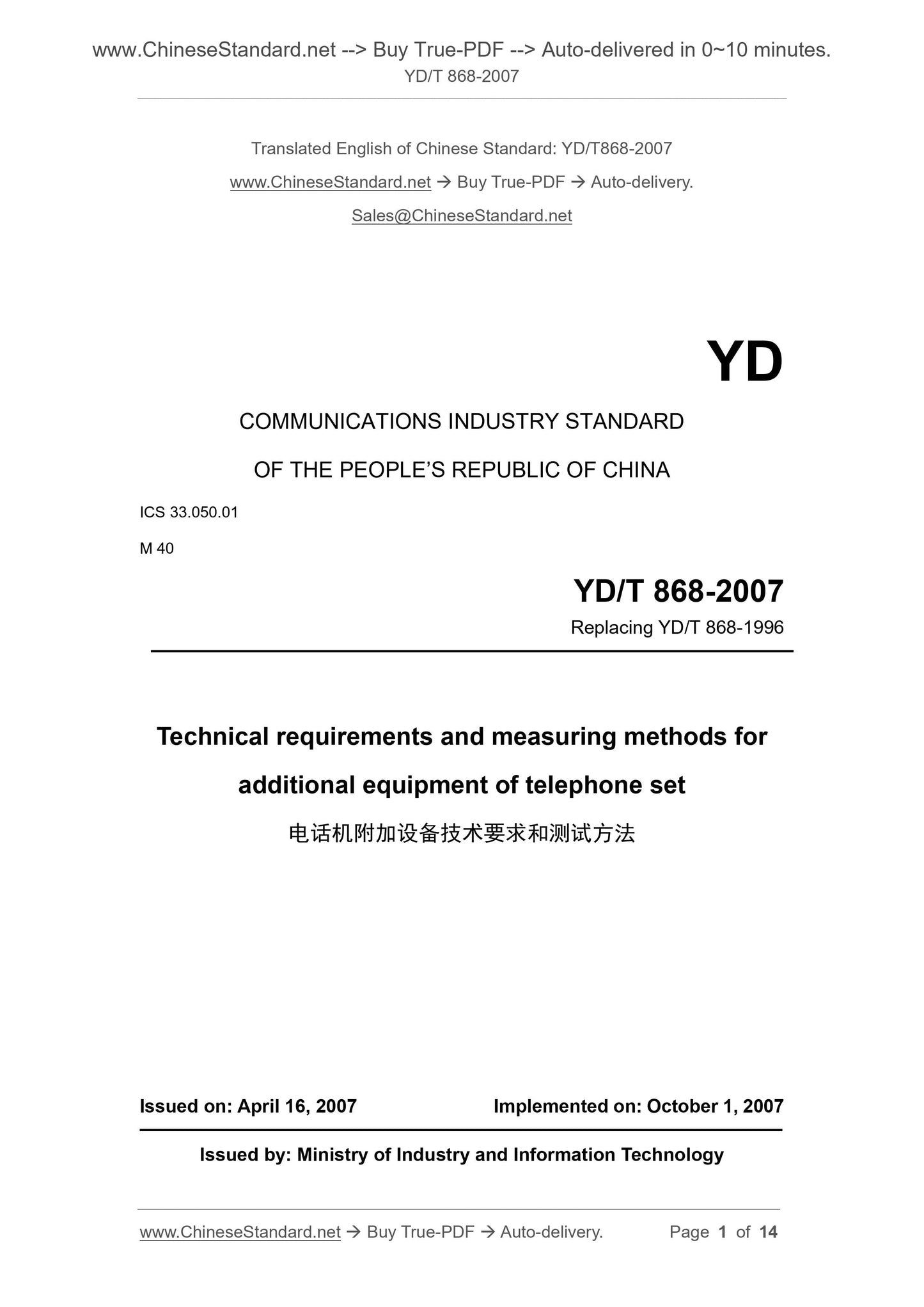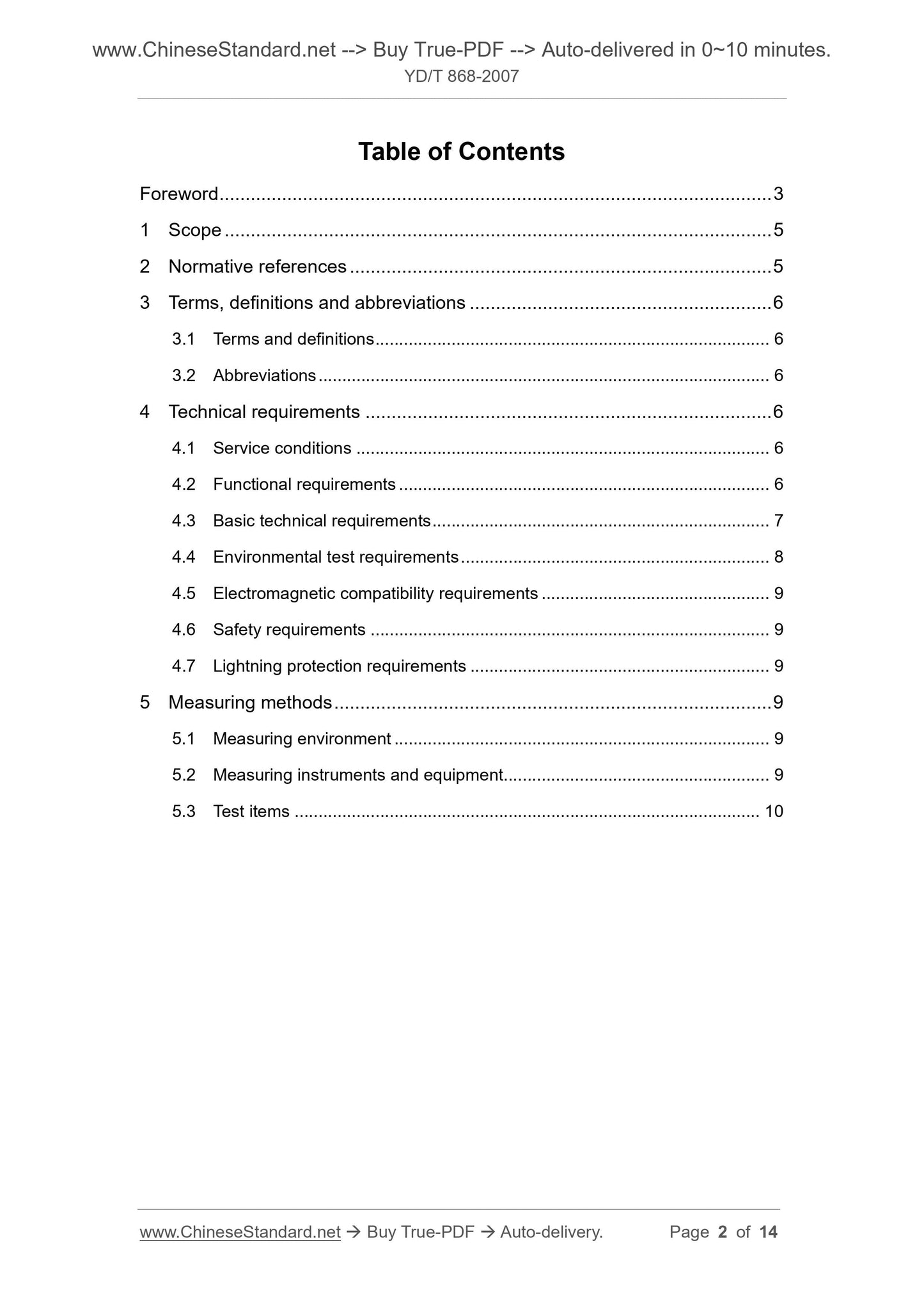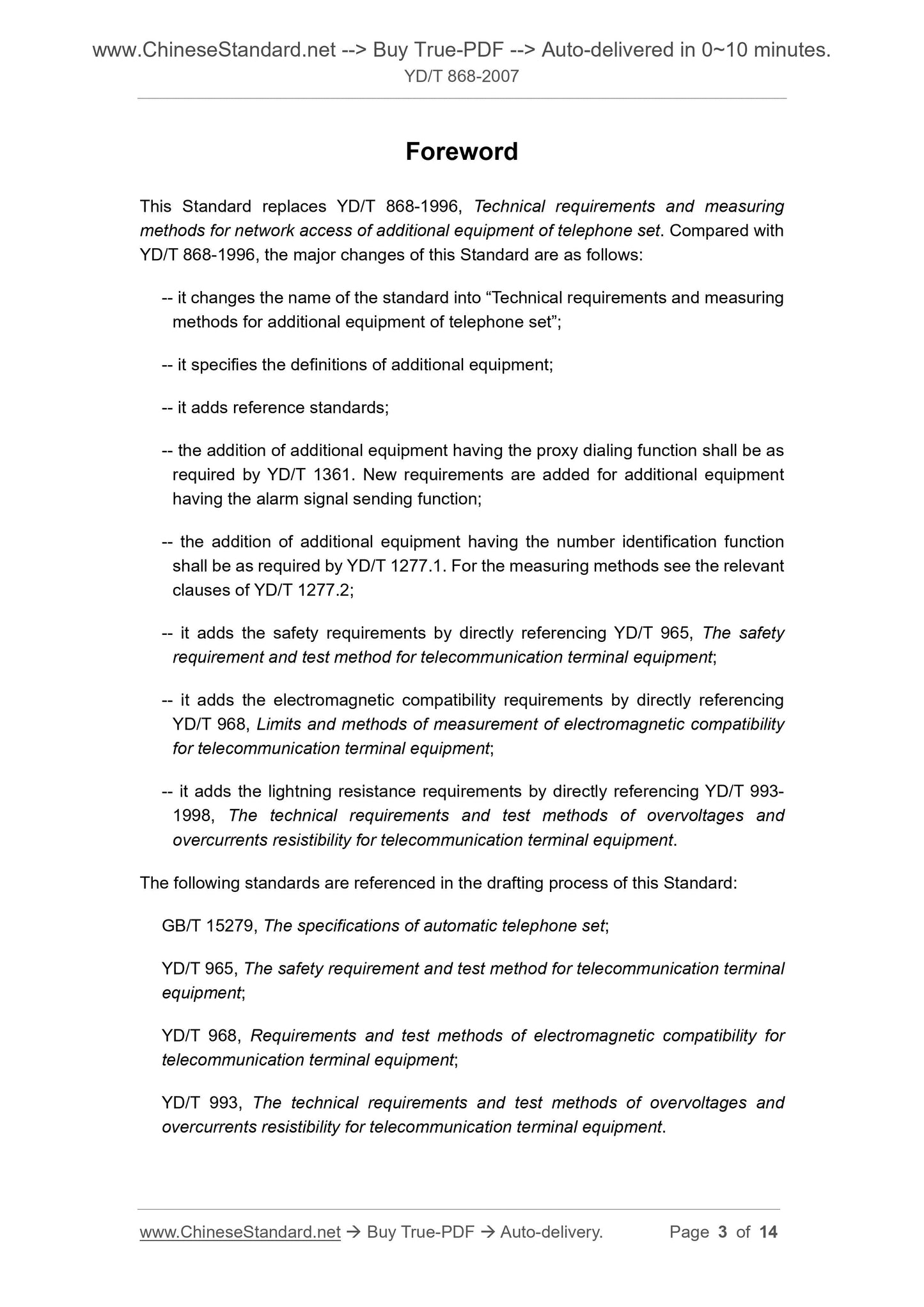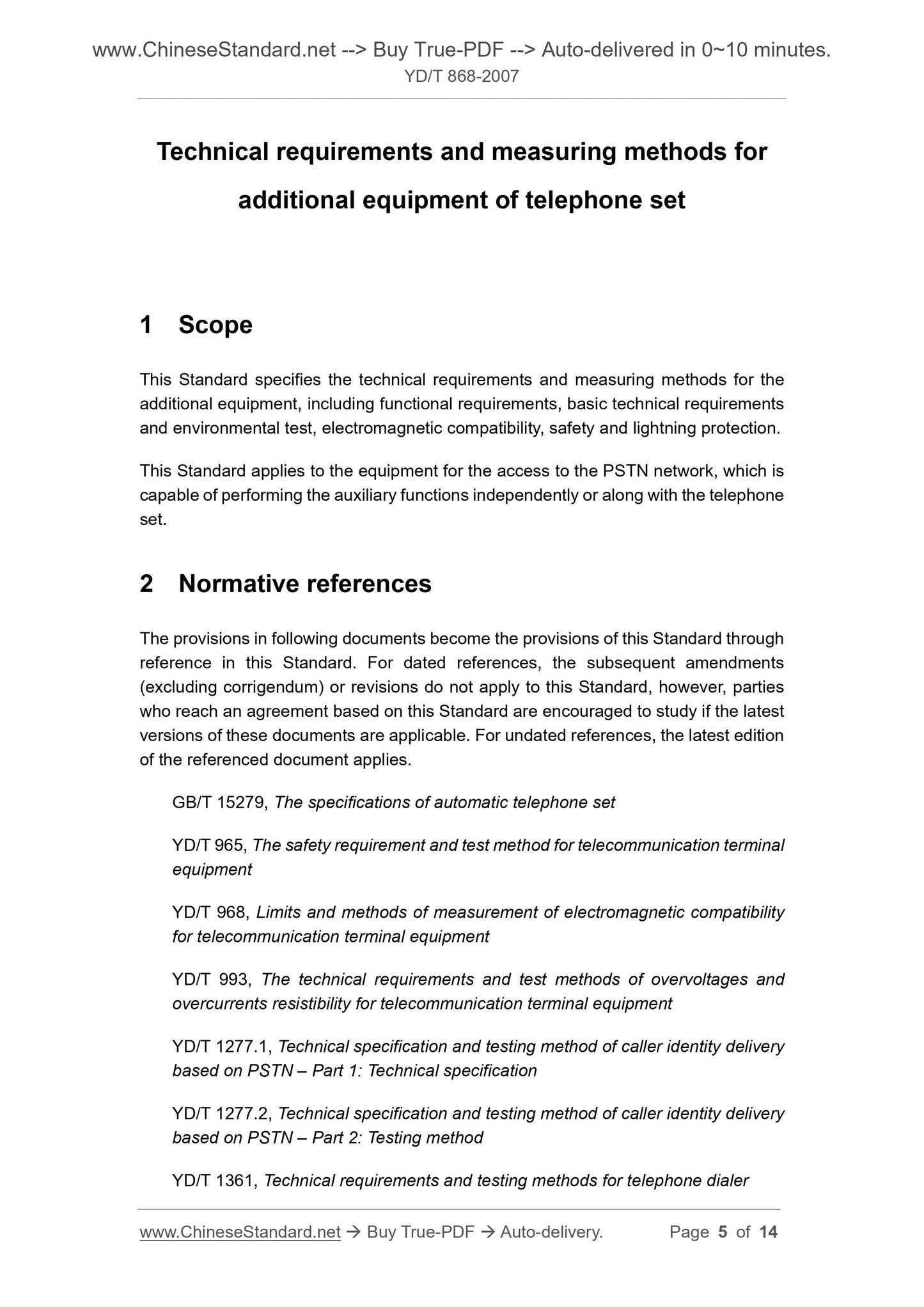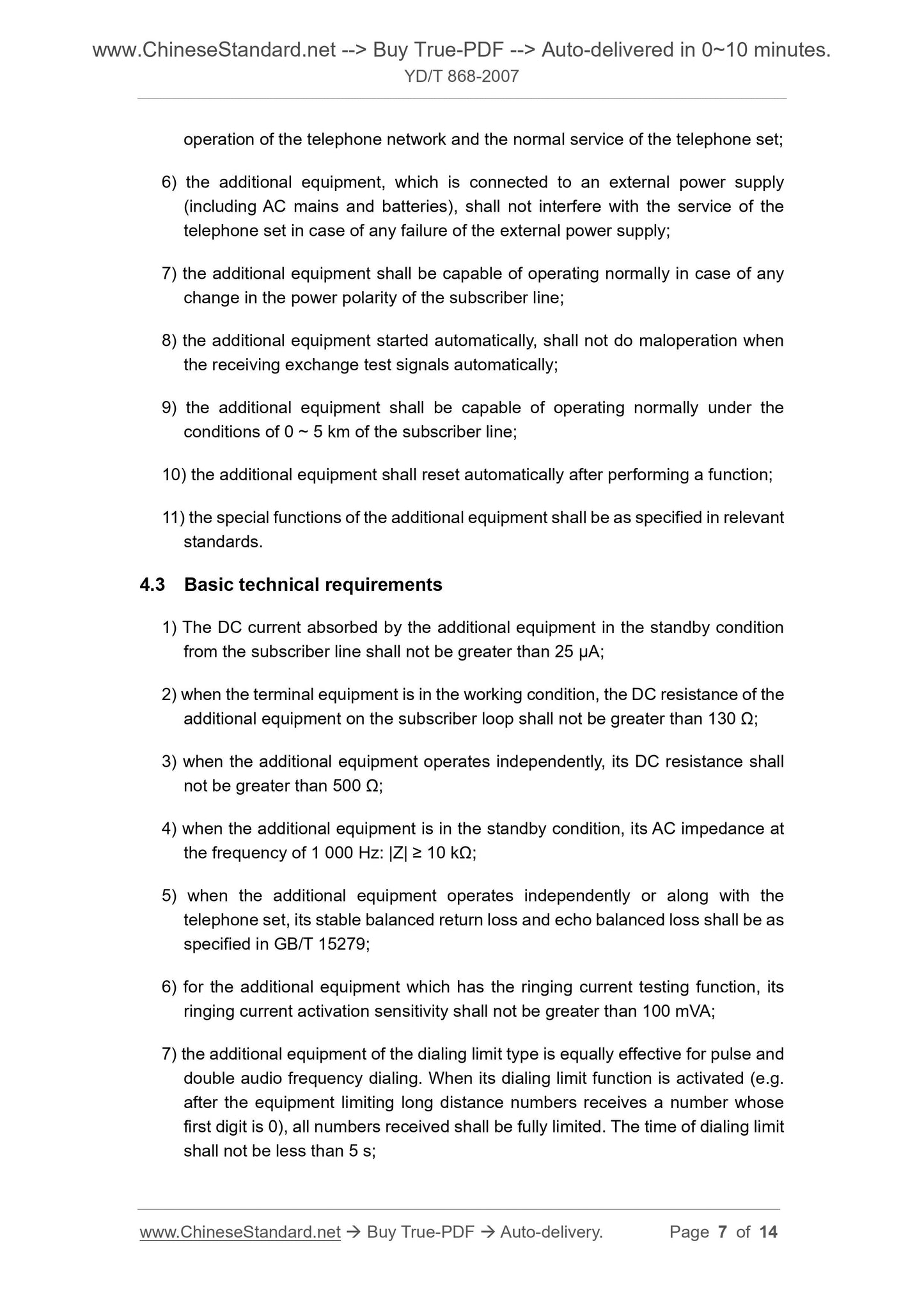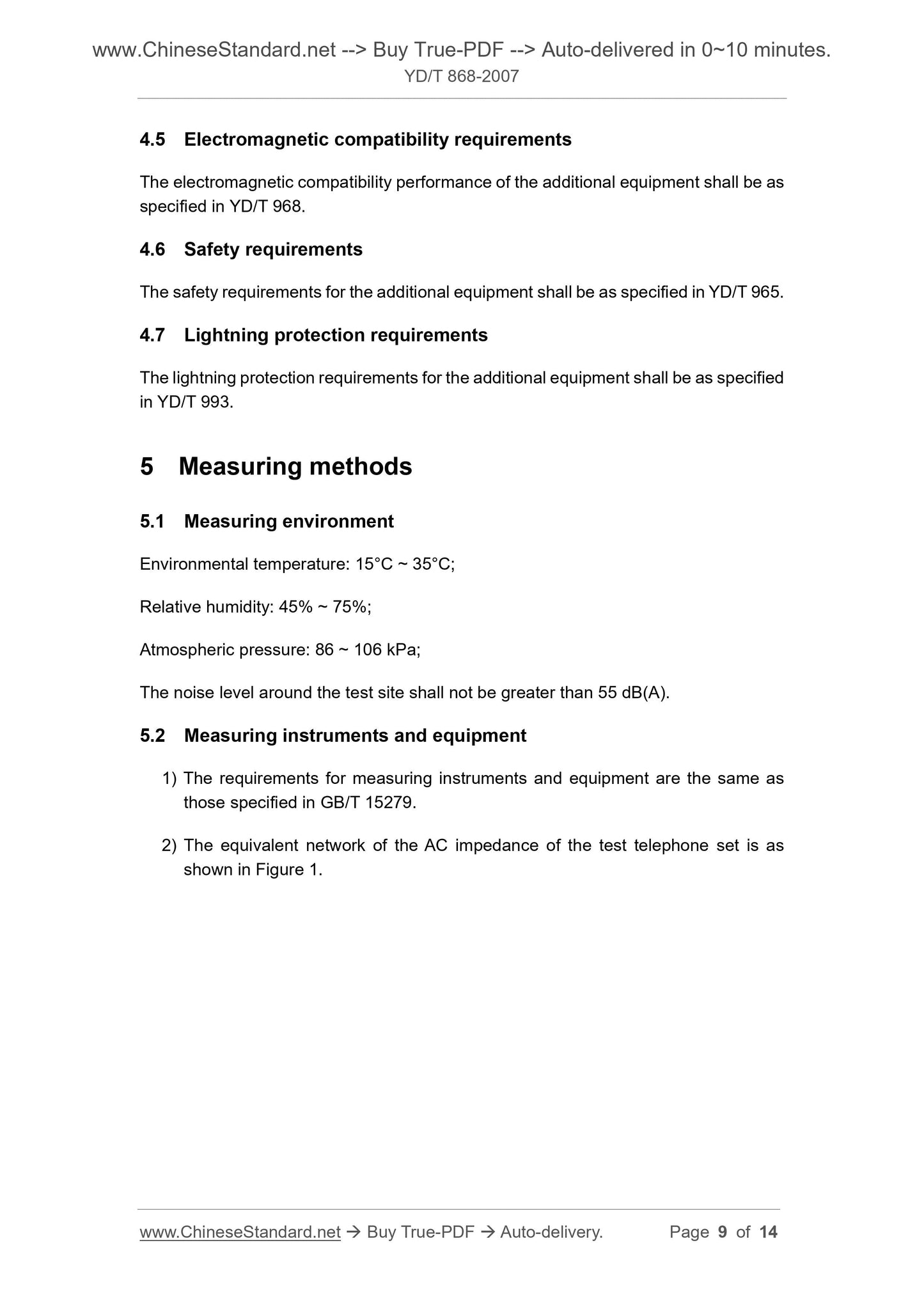1
/
of
6
www.ChineseStandard.us -- Field Test Asia Pte. Ltd.
YD/T 868-2007 English PDF (YD/T868-2007)
YD/T 868-2007 English PDF (YD/T868-2007)
Regular price
$130.00
Regular price
Sale price
$130.00
Unit price
/
per
Shipping calculated at checkout.
Couldn't load pickup availability
YD/T 868-2007: Technical requirements and measuring methods for additional equipment of telephone set
Delivery: 9 seconds. Download (and Email) true-PDF + Invoice.Get Quotation: Click YD/T 868-2007 (Self-service in 1-minute)
Newer / historical versions: YD/T 868-2007
Preview True-PDF
Scope
This Standard specifies the technical requirements and measuring methods for theadditional equipment, including functional requirements, basic technical requirements
and environmental test, electromagnetic compatibility, safety and lightning protection.
This Standard applies to the equipment for the access to the PSTN network, which is
capable of performing the auxiliary functions independently or along with the telephone
set.
Basic Data
| Standard ID | YD/T 868-2007 (YD/T868-2007) |
| Description (Translated English) | Technical requirements and measuring methods for additional equipment of telephone set |
| Sector / Industry | Telecommunication Industry Standard (Recommended) |
| Classification of Chinese Standard | M40 |
| Classification of International Standard | 33.050.01 |
| Word Count Estimation | 10,16 |
| Date of Issue | 2007-04-16 |
| Date of Implementation | 2007-10-01 |
| Older Standard (superseded by this standard) | YD/T 868-1996 |
| Quoted Standard | GB/T 15279; YD/T 965; YD/T 968; YD/T 993; YD/T 1277.1; YD/T 1277.2; YD/T 1361 |
| Regulation (derived from) | MIIT Science [2007] No. 193 |
| Issuing agency(ies) | Ministry of Information Industry of the People's Republic of China |
| Summary | This standard specifies the functional requirements of additional equipment, the basic technical requirements and environmental testing, electromagnetic compatibility, safety, lightning and other technical requirements and test methods. This standard applies to the PSTN network, the telephone can be done independently or together to complete the auxiliary functions of the device. |
Share
